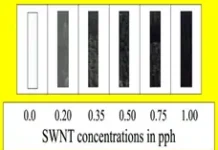By Shannon L. Gainey, Ph.D., director of Global Regulatory Management, J.M. Huber Corporation
The regulatory landscape for chemicals has become increasingly challenging. In particular, the sustainability benefits from UV/EB technologies (e.g. fast cure, low emissions, etc.) unfortunately are shadowed by the reproductive concerns associated with several photoinitiators and the long delays associated with nearly every new chemical submission made in the US under the Toxic Substances Control Act (TSCA), such as PreManufacture Notification (PMN), Low-Volume Exemption (LVE), etc.
Radiation-curable chemistries have been a preferred technology for more environmentally friendly inks, coatings and adhesives. The majority of the resin components are low hazard and require very little energy compared to water- or solvent-based technologies due to their rapid cure. They also emit essentially negligible Volatile Organic Compounds (VOCs). In addition, several biobased feedstocks now are available that further enhance the sustainability benefits of this technology.
Unfortunately, despite the sustainability advantages toward emissions, VOCs, etc. some of the key functional ingredients that make this chemistry work – specifically, some alpha-amino acetophenone and alpha-hydroxy acetophenone photoinitiators (PIs) – have been shown to be reproductive toxicity hazards. In 2023, the European Commission completed an Assessment or Regulatory Needs on benzoyl radical precursor-type PIs and flagged approximately 10 PIs in these classes for potential further authorization and potentially restriction. Some of these PIs – including TPO (diphenyl(2,4,6-trimethylbenzoyl)phosphine oxide and CAS: 75980-60-8), a preferred PI in the radiation-curable space – already have been added to the Candidate List of Substances of Very High Concern (SVHC), which is the first step for any substance to be considered for Authorization or Restriction under the EU REACH regulation.
Since the publication of the assessment of regulatory needs by the European Commission, no further action has taken place. This, along with several other proposed directives in the EU that could impact the radiation-curable industry, including the registration obligation for polymers under REACH, are not likely to proceed until after the next Commission is in place, sometime after June 2024. Other initiatives that have been put essentially on hold until after June 2024 include the Chemicals Strategy for Sustainability and its objective to revise the REACH regulation in an effort to reach a zero pollution, toxic-free environment, as well as additional regulation on food contact materials, both of which likely will have a direct impact on the industry.
Approval of New Chemicals
Despite the sustainability advantages of this technology, the radiation-curable space has found it increasingly difficult to get new chemistries approved for use, especially in the United States under TSCA. Often these new chemistries are less toxic, more energy efficient and/or based on biobased feedstocks, whereby all of these advances would be more favorable to the environment as compared to incumbent technologies they may be designed to replace. Unfortunately, since the new Administration took office in 2020, the US EPA has become extremely precautionary, and this has led to extensive delays in the review process of new chemicals. Since the passing of the Lautenberg Chemical Safety Act (LCSA) in 2016, which revised TSCA, the EPA has been required to assess the risk of new chemicals both on the uses described in the new chemical submission as well as all foreseeable uses. By statute, the EPA is supposed to complete the review for PMN in 90 days and LVE within 30 days. Unfortunately, the EPA hasn’t met its statutory requirement for really any case since the passing of the LCSA; currently, there are >350 PMN cases that have been under review for more than 300 days.
TSCA is a risk-based regulation, and the EPA is supposed to assess new chemicals based on risk, which is a function of both hazard and exposure. With the passing of the LCSA, the EPA must make an affirmative risk determination when assessing whether a new substance is “not likely to present an unreasonable risk.” The EPA is obliged to assess the risks associated with all uses described in the notification, as well as all foreseeable uses. Unfortunately, Congress didn’t define “unreasonable risk” when the LCSA was passed, and the threshold has proven to be rather subjective. Given the fact that the EPA now is regulating ~80% of new chemical submissions, compared to ~20% prior to the passing of the LCSA, the threshold for “unreasonable risk” clearly has changed. Most regulated cases will be issued a TSCA Section 5(e) Consent Order, which further delays the process.
Even after eight years since the passing of the LCSA, the process still is slow and lacks transparency. The extensive delays have hindered innovation in the US as companies cannot predict when new materials will be available for commercial use due to the unpredictability within the process. Given EPA is regulating four out of five chemicals, many in industry – including several companies in the radiation-curable space – have expressed the need for a fast-track program, whereby chemicals of similar functionality can be regulated with a standard set of restrictions (e.g. release to water restrictions, PPE requirements, etc.).
Even though the EPA is missing statutory deadlines to complete the review of new chemical submissions, it recently has passed the final fees rule, which will increase the fees for all fee-triggering activities under TSCA. For those submitting new chemical notifications, PMNs will increase from $19,020 to $37,000, and LVEs will increase from $5,590 to $10,870. There still is a price reduction of ~80% for companies that meet the “Small Business Concern” definition. The new fees took effect 60 days after the final rule was published, which was April 22, 2024.
Reporting Requirements
Beyond the challenges with getting new chemicals approved, the Chemical Data Reporting window is from June 1 to September 30, 2024 (just a reminder for all manufacturers and importers of chemicals in the US). TSCA stipulates that manufacturers and importers must submit chemical information to the US Environmental Protection Agency in accordance with Chemical Data Reporting (CDR) requirements, which occurs every four years. The submission must be completed online via the e-CDRweb tool, which is found within the Central Data Exchange (CDX).
Reporting is triggered if the annual production volume at a manufacturing (including importing) site is met during any of the calendar years since the last principal reporting year. For the 2024 submission period, the need to report is based on the production volume for the calendar years 2020-2023. The principal reporting year is calendar year 2023. Manufacturers (including importers) must provide manufacturing, processing and use information for only 2023 and production volume information for 2020, 2021, 2022 and 2023. If your company manufactured or imported 25,000 lbs or more of a chemical substance for commercial purposes during any of those years (or >2,500 lbs for chemical substances subject to rules, orders or actions), then your company is subject to reporting, unless you meet a qualifying exemption. Additional information regarding persons subject to reporting can be found at 40 CFR 711.8(b).
The US EPA also has been very busy addressing existing chemicals in the US. The passage of the LCSA required the EPA to designate 20 high-priority substances for risk evaluation, as well as 20 low-priority substances. Further, each time the risk evaluation for a substance is completed, a new substance must be identified. Although the EPA has the discretion to identify which chemicals should be evaluated as high-priority, TSCA requires 50% be pulled from the 2014 TSCA Work Plan list of chemicals, whereby priority should include substances that are persistent, bioaccummulative and toxic (PBT); known human carcinogens; and/or have high acute or chronic toxicity. To date, no chemicals widely used in the radiation-curable technology space have been flagged as a high-priority substance.
Another recent activity by the EPA, under the FY2020 National Defense Authorization Act, is to address per- and poly-fluroalkyl substances (PFAS). In 2023, the EPA finalized a data reporting rule under TSCA Section 8(a)(7) for all manufacturers and importers of PFAS and PFAS-containing articles in any year since 2011 to report on chemical identity, volumes, uses, byproducts, etc. It is estimated the rule includes ~1500 PFAS substances. The reporting deadline for most submitters is May 8, 2025. Given the rule applies to imported articles, it is likely that companies in the radiation-curable space will be subject to reporting, as this could include PPE, equipment, etc.
PFAS has become the target of potential restrictions in most countries/regions around the world. In January 2023, the EU introduced a bill that would restrict/ban ~10,000 PFAS substances. In 2024, the European Commission scheduled three meetings (March, June, September) whereby the committees will discuss specific sectors in which PFAS currently are used.
Conclusion
While this article only has highlighted some of the key recent developments in chemical regulations – specifically, in the US and the EU and the potential impact to the radiation-curable industry – it only touches the surface. There have been multiple developments in the food packaging space as well as US State-level activities and chemical regulations/restrictions beyond the US and EU. It has become increasingly challenging to monitor all emerging regulations and for companies to have the right resources to not only assess potential impact of emerging regulations but to also ensure compliance. The challenges further increase for companies that offer products in multiple markets (e.g. industrial, cosmetic, food packaging, etc.) as these companies are subject to the compliance requirements and changing regulations in each of these markets.
RadTech actively monitors regulatory changes that may impact the UV/EB industry. Please contact Gary Cohen at gary@radtech.org if you are interested in becoming a member to ensure you receive the latest updates.
References
- EU Assessment on Regulatory Needs for Photoinitiators: https://echa.europa.eu/documents/10162/cbe6dd2d-27af-20ec-5c8f-96f592a48a54
- TPO was added to the Candidate List of Substances of Very High Concern on June 14, 2023. For the most current list, see https://echa.europa.eu/candidate-list-table.
- The American Chemistry Council has prepared a tracking tool to monitor the number of new cases and the review period: https://www.americanchemistry.com/better-policy-regulation/chemical-management/toxic-substances-control-act-tsca/tracking-progress-tsca-new-chemicals-reviews
- For additional information on the new fees: https://www.epa.gov/tsca-fees/tsca-fees-table
- https://www.federalregister.gov/documents/2024/02/21/2024-02735/fees-for-the-administration-of-the-toxic-substances-control-act-tsca
- Additional information on Chemical Data Reporting under TSCA: https://www.epa.gov/chemical-data-reporting/epa-announces-2024-chemical-data-reporting-deadlines
- For more information on the risk evaluation process: https://www.epa.gov/assessing-and-managing-chemicals-under-tsca/prioritizing-existing-chemicals-risk-evaluation#:~:text=TSCA%20requires%20that%20EPA%20designate,priority%20for%20upcoming%20risk%20evaluations
- https://www.epa.gov/assessing-and-managing-chemicals-under-tsca/tsca-work-plan-chemicals#updates
- EPA hosted a webinar on January 25, 2024, summarizing the reporting rule and requirements. A recording of the webinar and slides can be found here: https://www.epa.gov/assessing-and-managing-chemicals-under-tsca/webinar-tsca-section-8a7-reporting-and-recordkeeping#:~:text=The%20reporting%20rule%20is%20a,volumes%20made%20and%20processed%2C%20byproducts%2C





